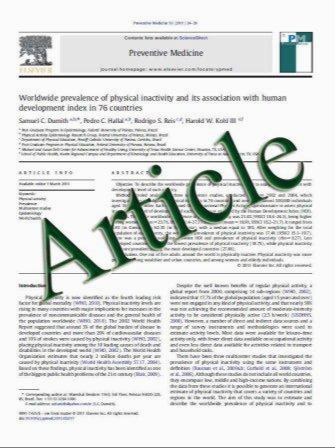The Absence of Ser389 Phosphorylation in p53 Affects the Basal Gene Expression Level of Many p53-Dependent Genes and Alters the Biphasic Response to UV Exposure in Mouse Embryonic Fibroblasts
- نوع فایل : کتاب
- زبان : انگلیسی
- مؤلف : Wendy Bruins,1# Oskar Bruning,2# Martijs J. Jonker,2 Edwin Zwart,1 Tessa V. van der Hoeven,2 Jeroen L. A. Pennings,1 Han Rauwerda,2 Annemieke de Vrie
- چاپ و سال / کشور: 2008
Description
Phosphorylation is important in p53-mediated DNA damage responses. After UV irradiation, p53 is phosphorylated specifically at murine residue Ser389. Phosphorylation mutant p53.S389A cells and mice show reduced apoptosis and compromised tumor suppression after UV irradiation. We investigated the underlying cellular processes by time-series analysis of UV-induced gene expression responses in wild-type, p53.S389A, and p53/ mouse embryonic fibroblasts. The absence of p53.S389 phosphorylation already causes small endogenous gene expression changes for 2,253, mostly p53-dependent, genes. These genes showed basal gene expression levels intermediate to the wild type and p53/, possibly to readjust the p53 network. Overall, the p53.S389A mutation lifts p53-dependent gene repression to a level similar to that of p53/ but has lesser effect on p53-dependently induced genes. In the wild type, the response of 6,058 genes to UV irradiation was strictly biphasic. The early stress response, from 0 to 3 h, results in the activation of processes to prevent the accumulation of DNA damage in cells, whereas the late response, from 12 to 24 h, relates more to reentering the cell cycle. Although the p53.S389A UV gene response was only subtly changed, many cellular processes were significantly affected. The early response was affected the most, and many cellular processes were phasespecifically lost, gained, or altered, e.g., induction of apoptosis, cell division, and DNA repair, respectively. Altogether, p53.S389 phosphorylation seems essential for many p53 target genes and p53-dependent processes.
MOLECULAR AND CELLULAR BIOLOGY, Mar. 2008, p. 1974–1987 Received 31 August 2007/Returned for modification 16 October 2007/Accepted 2 January 2008


